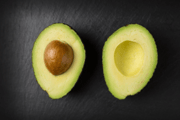Cocoa crisis? Skyrocketing chocolate prices continue to leave a bitter taste on sweet tooths' mouths
By
Danielle F.
- Replies 8
There's nothing quite like unwrapping a chocolate bar and taking that first bite.
It's a simple pleasure that food lovers have enjoyed since childhood until today.
However, chocolate indulgences could get bitter soon, as a recent report shared a rise in the famous treat's prices.
A report by agricultural lender Rabobank reported a price hike on chocolates.
To cope with the rising prices, manufacturers have started resorting to 'shrinkflation'— a practice where a smaller product could cost the same price or higher.
The global cocoa shortage led to the lowest cocoa stocks in over two decades, putting pressure on the world's chocolate producers.
To cope with the demand, farmers either pass production costs onto their customers or reduce the size of their products.
Aussie shoppers, particularly sweet tooths, should already see the impact of these changes.
Earlier this month, Cadbury's 12 g Freddo and 35 g Caramello Koala have doubled in price to $2, marking the first price rise for each product in a decade.
Mars also increased the price of some of its products by 15 per cent.
While these prices have started taking effect, Rabobank said the worst is yet to come.
West Africa, one of the top chocolate producers globally, has been grappling with climate issues in this region.
These climate changes have been damaging crop yields since the 2022-2023 cocoa season, which led to the highest commodity price level for cocoa in 50 years.
The International Cocoa Organisation (ICCO) reported a 14.2 per cent drop in global cocoa production for the 2023-2024 season.
This drop could translate to about 462,000 metric tonnes of cocoa.
Since the issue started, companies have begun hedging prices and supply contracts up to a year in advance.
This could pose a significant challenge for the chocolate sector, which is already facing a longer-term, structural decline in demand.
RaboResearch analyst Paul Joules explained that chocolate manufacturers have also been grappling with soaring cocoa costs, reflected in higher local retail prices.
Consumers who enjoy products with high cocoa content, like dark chocolates, should see and feel the higher prices.
The Australian Bureau of Statistics Consumer Price Index data showed year-on-year inflation at 4.6 per cent for the Snacks and Confectionery category, chocolate included.
This is a total increase of 21 per cent since June 2022, when the problems started to arise.
Many manufacturers have already resorted to 'shrinkflation' and 'skimpflation'—where they alter recipes to use less cocoa and more fillers.
While these are seen as cost-effective tactics, consumers often notice the difference.
In response to the situation, several chocolate giants commented about how they will take care of supply costs amid a cost-of-living crisis.
'We have not passed on all the cost increases but are working hard to keep prices as low as possible to keep our products affordable while continuing to deliver the same quality and delicious tasting products that people know and love,' a Nestle spokesperson stated.
'With strict cost management, the Group will mitigate the impact of rising cocoa prices to a certain extent, but further price increases will be needed,' representatives from Lindt & Sprungli shared.
Cadbury, Mars, and Ferrero have yet to comment.

Have you noticed changes in the size or price of your favourite chocolate products? How do you feel about the possibility of paying more for less? Share your thoughts and experiences in the comments below!
It's a simple pleasure that food lovers have enjoyed since childhood until today.
However, chocolate indulgences could get bitter soon, as a recent report shared a rise in the famous treat's prices.
A report by agricultural lender Rabobank reported a price hike on chocolates.
To cope with the rising prices, manufacturers have started resorting to 'shrinkflation'— a practice where a smaller product could cost the same price or higher.
The global cocoa shortage led to the lowest cocoa stocks in over two decades, putting pressure on the world's chocolate producers.
To cope with the demand, farmers either pass production costs onto their customers or reduce the size of their products.
Aussie shoppers, particularly sweet tooths, should already see the impact of these changes.
Earlier this month, Cadbury's 12 g Freddo and 35 g Caramello Koala have doubled in price to $2, marking the first price rise for each product in a decade.
Mars also increased the price of some of its products by 15 per cent.
While these prices have started taking effect, Rabobank said the worst is yet to come.
West Africa, one of the top chocolate producers globally, has been grappling with climate issues in this region.
These climate changes have been damaging crop yields since the 2022-2023 cocoa season, which led to the highest commodity price level for cocoa in 50 years.
The International Cocoa Organisation (ICCO) reported a 14.2 per cent drop in global cocoa production for the 2023-2024 season.
This drop could translate to about 462,000 metric tonnes of cocoa.
Since the issue started, companies have begun hedging prices and supply contracts up to a year in advance.
This could pose a significant challenge for the chocolate sector, which is already facing a longer-term, structural decline in demand.
RaboResearch analyst Paul Joules explained that chocolate manufacturers have also been grappling with soaring cocoa costs, reflected in higher local retail prices.
Consumers who enjoy products with high cocoa content, like dark chocolates, should see and feel the higher prices.
The Australian Bureau of Statistics Consumer Price Index data showed year-on-year inflation at 4.6 per cent for the Snacks and Confectionery category, chocolate included.
This is a total increase of 21 per cent since June 2022, when the problems started to arise.
Many manufacturers have already resorted to 'shrinkflation' and 'skimpflation'—where they alter recipes to use less cocoa and more fillers.
While these are seen as cost-effective tactics, consumers often notice the difference.
In response to the situation, several chocolate giants commented about how they will take care of supply costs amid a cost-of-living crisis.
'We have not passed on all the cost increases but are working hard to keep prices as low as possible to keep our products affordable while continuing to deliver the same quality and delicious tasting products that people know and love,' a Nestle spokesperson stated.
'With strict cost management, the Group will mitigate the impact of rising cocoa prices to a certain extent, but further price increases will be needed,' representatives from Lindt & Sprungli shared.
Cadbury, Mars, and Ferrero have yet to comment.
Key Takeaways
- Chocolate prices and instances of shrinkflation steadily rose this year due to a global cocoa shortage.
- Climate issues in West Africa, a central cocoa-producing region, led to a significant drop in global cocoa production and the highest commodity price level for cocoa in 50 years.
- Manufacturers started using tactics like 'shrinkflation' (reducing package sizes) and 'skimpflation' (altering recipes to use less cocoa) to manage costs.
- Lindt indicated that price increases are necessary to cope with the rising cost of cocoa, while Nestle aimed to keep prices as low as possible.








